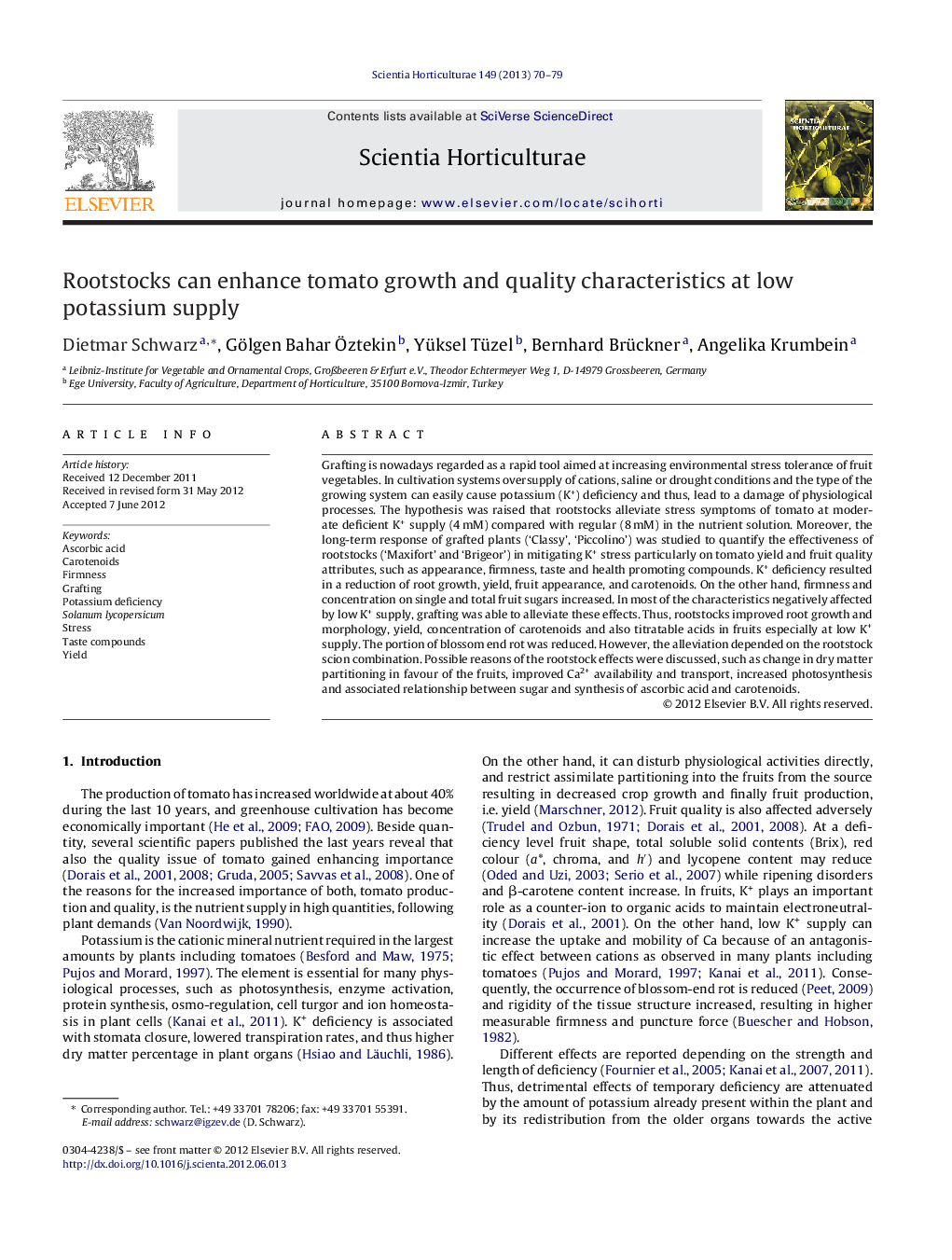| Article ID | Journal | Published Year | Pages | File Type |
|---|---|---|---|---|
| 4567482 | Scientia Horticulturae | 2013 | 10 Pages |
Grafting is nowadays regarded as a rapid tool aimed at increasing environmental stress tolerance of fruit vegetables. In cultivation systems oversupply of cations, saline or drought conditions and the type of the growing system can easily cause potassium (K+) deficiency and thus, lead to a damage of physiological processes. The hypothesis was raised that rootstocks alleviate stress symptoms of tomato at moderate deficient K+ supply (4 mM) compared with regular (8 mM) in the nutrient solution. Moreover, the long-term response of grafted plants (‘Classy’, ‘Piccolino’) was studied to quantify the effectiveness of rootstocks (‘Maxifort’ and ‘Brigeor’) in mitigating K+ stress particularly on tomato yield and fruit quality attributes, such as appearance, firmness, taste and health promoting compounds. K+ deficiency resulted in a reduction of root growth, yield, fruit appearance, and carotenoids. On the other hand, firmness and concentration on single and total fruit sugars increased. In most of the characteristics negatively affected by low K+ supply, grafting was able to alleviate these effects. Thus, rootstocks improved root growth and morphology, yield, concentration of carotenoids and also titratable acids in fruits especially at low K+ supply. The portion of blossom end rot was reduced. However, the alleviation depended on the rootstock scion combination. Possible reasons of the rootstock effects were discussed, such as change in dry matter partitioning in favour of the fruits, improved Ca2+ availability and transport, increased photosynthesis and associated relationship between sugar and synthesis of ascorbic acid and carotenoids.
► Low K+ supply (4 vs. 8 mM in the nutrient solution) resulted in a reduction of root growth, yield, fruit appearance, and carotenoids. Firmness and concentration on single and total fruit sugars increased. ► Grafting onto commercial rootstocks improved root growth and morphology, yield, concentration of carotenoids and also titratable acids in fruits especially at low K+ supply. The portion of blossom end rot was reduced. ► The alleviation depended on the rootstock scion combination. ► Possible reasons for the advantage of grafting, such as change in dry matter partitioning in favour of the fruits, improved Ca2+ availability and transport, increased photosynthesis and associated relationship between sugar and synthesis of ascorbic acid and carotenoids, are discussed.
